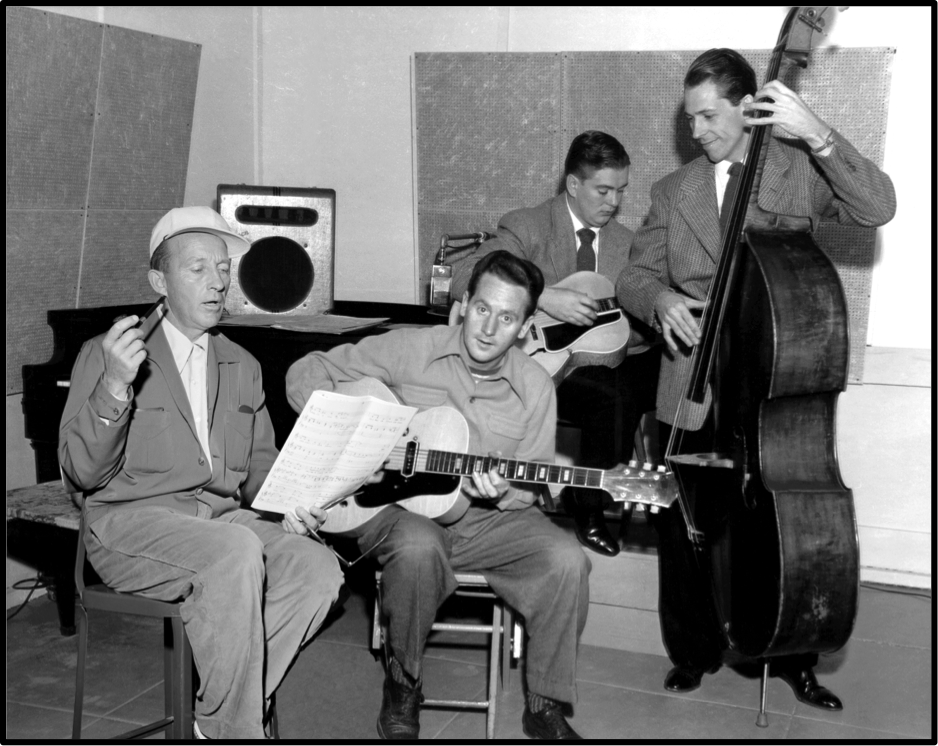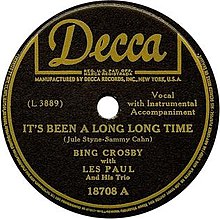
Mr. Paul, a puckish, red-haired octogenarian, is widely considered one of the great jazz guitarists of his generation, whose astonishing versatility has won admirers ranging from Django Reinhardt to Slash of Guns 'n' Roses. And as an inventor, Mr. Paul is to the electric guitar what his fellow Jerseyan, Thomas A. Edison, was to the reading lamp.
Aside from making rock-and-roll possible with his creation of the electric guitar, Mr. Paul also contributed immensely to the advance of studio recording over the years with inventions like multitrack recording, reverb, and more than a dozen others.
Mr. Paul, who started performing country music at age 14 as 'Red Hot Red, the Wizard of Waukesha,' his hometown in Wisconsin, turns 80 on Friday, and he continues to ply his two passions, despite a near-fatal car accident and a later stroke: guitar playing and inventing, here in his cluttered den.
For Mr. Paul's birthday, the Gibson Guitar company, which owes a great deal of its success to his inventions, plans a television special in his honor this fall and another event at the Smithsonian Institution later this year.
'Les, in my view, is definitely the most influential and well-known guitarist anywhere,' said Henry Juszkiewicz, the chairman of Gibson Guitars since 1986. He estimated that the Les Paul Gibson represents roughly half of the company's guitar sales.
Another ardent fan, Paul McCartney, gained fame playing one of Mr. Paul's inventions, the electric bass guitar. 'Les was one of the greatest innovators in recording techniques,' Mr. McCartney said in a statement. 'The work he put into developing the guitar that was named after him made the instrument an all-time classic, and his incredible playing skills make him one of the masters of the instrument.'
Despite hands that are swollen and stiff from arthritis, Mr. Paul plays two buoyant sets with his trio (with Lou Pallo on guitar and Gary Mazzeroppi on bass) at Fat Tuesday's in Manhattan every Monday. The repertory covers classics from the 1940's and 50's like 'How High the Moon' and selections from recordings he made with his wife, Mary Ford, who died in 1977. During the set, he reminisces about the singers he has worked with over the decades, including Bing Crosby, Rudy Valee, the Andrew Sisters, the Weavers, and Gene Autry.

Les Paul started performing at home when he was 10 years old, organizing his own little orchestra. He also became fascinated with electronics, building his own broadcasting set in his basement. He then designed a recording machine using the flywheel from a Cadillac (his father owned a garage) and a belt from a dentist's drill. 'Here she is,' Mr. Paul said, pointing to the crude-looking but functional device in his studio.
About the same time he saved money from his newspaper route and bought a Silvertone guitar, for $2.49. 'I took off the sixth string because my fingers couldn't reach it,' he recalled.
As he practiced his new instrument and listened to jazz bands from Chicago over the radio, Mr. Paul noticed that an acoustic guitar, which got its amplification from the string ringing off the hollow body, could not compete for volume in a big band. It needed a boost, he thought.
Only 13 years old at the time, he reasoned that a phonograph pickup -- the little device that takes the sound from a record and makes it loud enough to hear -- could provide the extra volume if placed under the strings and sent to a radio speaker. Thus was born a rudimentary electric guitar, using the cartridge and stylus from a phonograph, in 1927.
By 1941, with his career as a country and jazz guitarist taking off, Mr. Paul came up with the idea that an electric guitar need not have a hollow body at all. The pickup did all the work, so theoretically a guitar could be fashioned from a solid piece of wood. And that is exactly what he did, using a four-by-four as the body and a more sophisticated pickup. Colleagues called it 'the log.'
'It was funny, you know: I went and played a gig in Long Island, and we got such a bad reaction you can't believe it,' Mr. Paul recalled. 'They said it was the worst damn thing they'd ever heard -- it was the dog of dogs.'
Undaunted, Mr. Paul decided to make the log look like a guitar by concealing it under a conventional guitar body. 'At the next gig, they loved it!' he said with a laugh.
 During World War II, the Les Paul Trio, along with many of the top acts
of the day, entertained servicemen. One of his first big hits was It's Been a Long, Long Time with Bing Crosby. At Crosby's suggestion he built his own recording studio and came up with more inventions like reverb. In 1953 he perfected the first multi-track recording machine, a revolutionary device that allowed musicians to lay down separate lines of music and vocals and blend them together.
During World War II, the Les Paul Trio, along with many of the top acts
of the day, entertained servicemen. One of his first big hits was It's Been a Long, Long Time with Bing Crosby. At Crosby's suggestion he built his own recording studio and came up with more inventions like reverb. In 1953 he perfected the first multi-track recording machine, a revolutionary device that allowed musicians to lay down separate lines of music and vocals and blend them together.
In 1945, when doing an NBC television special, he teamed up with a young singer named Colleen Summers. He thought she needed a more catchy name so, leafing through the telephone directory, he came up with Mary Ford. They married in 1949 and went on to record dozens of hits, performing frequently on television. They divorced in 1961. (He and his first wife, Virginia, whom he had married in 1937, had two sons, Gene and Russel. With Mary Ford he had a son, Robert, and adopted a girl, Colleen.)
Mr. Paul's jaunty style and lilting spirit belie a life of physical adversity. In 1948, on his way to a performance with Mary Ford, their car slid on an icy bridge and crashed into a support. Mr. Paul, in the passenger seat, threw his left arm across his wife's face to protect her. He was seriously injured, requiring on-and-off hospitalization for nearly two years. His arm had been smashed in numerous places, and doctors told him that they could set it in one position but that he would have no mobility after that. Mr. Paul told them to set it in a guitar-playing position, at almost a 90-degree angle at the elbow. That is how it is today.
Within weeks of his last hospitalization the Les Paul Trio was rehearsing. In the following years the threesome recorded some of their biggest hits: 'Tennessee Waltz,' 'Mockin' Bird Hill,' 'How High the Moon' and 'Vaya Con Dios.'
In 1964 he suffered another career-threatening injury, a broken eardrum, and underwent several surgeries. In the late 1960's he continued to play and to design guitars for Gibson, including several versions of the now-famous Les Paul. A minor stroke in 1975 was followed the same year by a heart attack. In 1985 he had one of the country's first five-vessel bypass operations.
One of Mr. Paul's oldest friends is the guitarist Chet Atkins, who has recorded two albums with him. 'I know he likes to be considered an inventor, but to me he is just a great guitar player,' Mr. Atkins said.
Mr. Paul looks around his studio and runs his hand over the 'log,' lying in a beat-up guitar case on top of an amplifier. 'The damn thing worked, you know?' he said with a spark in his eye.
Les Paul discusses Bing's role in the development of the tape recorder.